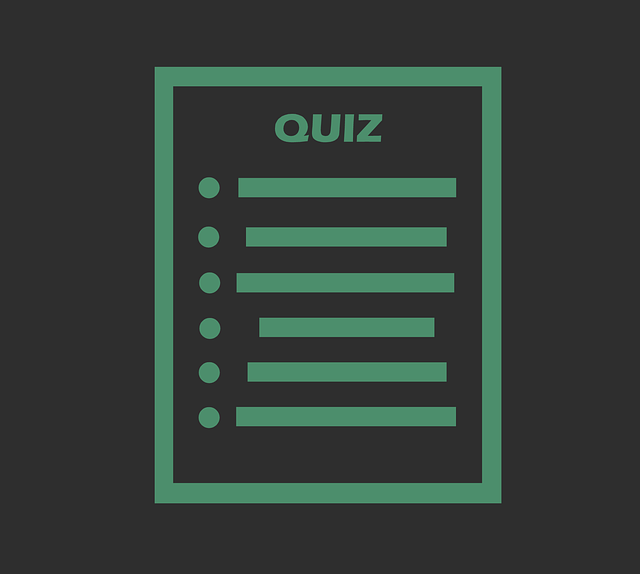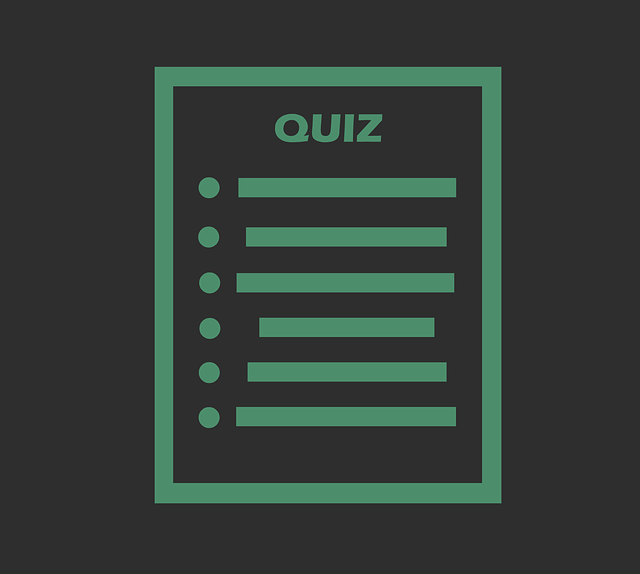In this blog you will find the correct answer of the Coursera quiz Industrial IoT on Google Cloud Platform Coursera week 1 Quiz mixsaver always try to brings best blogs and best coupon codes
Quiz:1
- Take a moment to ponder some of the uses of IoT: predictive maintenance, industry safety solutions, building and home automation, remote patient monitoring, asset tracking, and fraud detection.
- All of these uses have a common theme that is the reason IoT is garnering so much attention. What is it?
- All the use cases employ sensors in new and unique ways
- All the use cases use machine learning or artificial intelligence, which is an incredibly fast growing field.
- All the use cases are gaining insights about an environment that cannot be obtained any other way.
2. Why has IoT become so popular in the last few years?
- Better cloud IoT architectures and integrated data analysis tools have led to more insights from IoT data.
- Better sensor technology has led to better data gathering.
- Better and more accessible ML and AI models have increased the need for IoT.
3. Which of the following characteristics are crucial for an IoT network?
- An IoT network must be capable of scaling quickly.
- An IoT network must be able to process and store data quickly.
- An IoT network must be capable of doing machine learning at the device level.
- An IoT device must use a gateway to connect to the cloud.
Quiz:2
1. What are some of the functions that can be performed by an IoT gateway?
- To connect devices to the cloud
- To perform machine learning
- To store data from devices for fast analysis on the Edge
- To perform real-time analytics
2. What makes IoT data valuable?
- The data can be collected and stored for future analysis
- IoT data is valuable because it can be readily used in machine learning models.
- The data can give insights into real world situations.
- Massive amounts of data is collected real time.
3. A delivery company wants to add localization intelligence to its IoT network. It has 1000 drivers and trucks, but in the next few years it wants to add self driving trucks.
As it is designing its network, what are some things it should keep in mind?
- Increased storage needs of the self driving trucks
- Connecting a new generation of devices into an existing IoT network.
- Changing traffic patterns over time
- Creating a communication bottleneck when adding the self driving trucks
4. An IoT network is used to predict electricity usage in a smart city. The network has one million devices sending data to the cloud. The network designers have added predictive usage to the network. Which means, depending upon the usage predictions, the network will turn off air conditioning and lights in low use buildings.
- Initial tests of the network are showing the bottlenecks in data processing. What could the designers do to fix this problem?
- Move the prediction tasks from the cloud to the devices.
- Increase the maximum capacity of the data processing inputs.
- Use a fast storage option to quickly store data, then analyze it during non-peak times.
Quiz:3
1. You are designing an IoT network to monitor hallway activity at the local college. Whenever there is movement in the hallway, you will want to track it to determine lighting, temperature, and classroom use.
What assumption can you make while developing your network?
- Data will arrive in bursts with periods of low or no activity as well as periods of high activity.
- Data will arrive at regular intervals with predictable periods
- It will be easy to track individual student movement.
- To train a model to predict activity, you will need data over several semesters.
2. You are designing an IoT network that monitors hallway activity in all schools in New York city.
What assumptions you can make while developing your network?
- Due to the massive amounts of data that will flow during high activity times, the system needs to be designed to handle the maximum flow.
- Massive amounts of data need to be stored. The network needs inexpensive storage capacity with fast access to recent data as well as access to older data.
- During periods of high activity messages may come into the network at the same time, potentially leading to data loss. To prevent this you will need a system that can guarantee message delivery.
3. You have successfully designed an IoT network for a school district. You have also created a machine learning model that makes inferences about student activity in the hallways.
What considerations should you keep in mind as you deploy your network?
- The machine learning model will need to be regularly trained with new data.
- You will have to keep track of changes in the holiday schedules for the schools, as this can affect the ML model.
- If the number of schools and students increase, it may be necessary to consider doing some of the data processing on the Edge, rather than in the cloud.
Quiz:4
1. Why is being serverless an important characteristic of Cloud IoT?
- Being serverless means the cloud network can expand and contract to meet the variable needs of IoT.
- Being serverless means devices send all data to the cloud for processing and analysis.
- Being serverless means the same sensors and devices must be used throughout the IoT network.
2. You are designing an IoT network of 1000 devices. It is critical to know when a device is off line. You want to know as soon as possible that a device is not communicating with the cloud.
What should you do to make this possible?
- Write code that monitors the Details of each device, especially the Error and last Heartbeat. Then have it send notices to a dashboard when a device fails.
- When creating the devices add the Stackdriver logging feature to the device. Set the monitoring at Error level to capture failed connection attempts and communication errors.
- When creating the devices add the Stackdriver logging feature to the device. Set the monitoring at Debug level to capture failed connection attempts and communication errors.
3. Why would intelligence built-in with ML and AI capabilities be of great interest to IoT?
- ML and AI can generate a lot of insights from IoT data, making that data more valuable.
- Using ML and AI, developers can create interactive interfaces for IoT applications.
- ML and AI are necessary for developing valuable data insights from IoT networks.
4. What are the advantages of ML on the Edge?
- Doing ML on the Edge means data must be stored on the device
- Doing ML on the Edge means models can be bigger on local devices than on the cloud
- Doing ML on the Edge increases privacy by keeping data on the device
- Doing ML on the Edge decreases latency
5. You are designing an IoT network with 1000 devices located all over Tasmania. They will be in areas open to the public.
What security measure should you use to stop or minimize an attack?
- Devices can share keys as long as there is a specified expiration date for the key.
- Each device should have a unique authorization key.
- Each device should have one unique key and one common key, to make updates easier.
Quiz:5
1. Given the following information about temperature sensors, answer the questions listed below.
1. Negative Temperature Coefficient (NTC) thermistor
An NTC thermistor experiences such a large change in resistance per °C, small changes in temperature are reflected very fast and with high accuracy (0.05 to 1.5 °C). Because of its exponential nature, the output of an NTC thermistor requires linearization. The effective operating range is -50 to 250 °C for glass encapsulated thermistors or 150°C for standard.
2. Resistance Temperature Detector (RTD)
An RTD, consists of a film or, for greater accuracy, a wire wrapped around a ceramic or glass core. The most accurate RTDs are made using platinum but lower-cost RTDs can be made from nickel or copper. However, nickle and copper are not as stable or repeatable. Platinum RTDs offer a fairly linear output that is highly accurate (0.1 to 1 °C) across -200 to 600 °C. While providing the greatest accuracy, RTDs also tend to be the most expensive of temperature sensors.
3. Thermocouple
This temperature sensor type consists of two wires of different metals connected at two points. The varying voltage between these two points reflects proportional changes in temperature. Thermocouples are nonlinear, requiring conversion when used for temperature control and compensation, typically accomplished using a lookup table. Accuracy is low, from 0.5 °C to 5 °C. However, they operate from -200 °C to 1750 °C.
4. Semiconductor-based sensors
A semiconductor-based temperature sensor is placed on integrated circuits (ICs). These sensors are effectively two identical diodes with temperature-sensitive voltage vs current characteristics that can be used to monitor changes in temperature. They offer a linear response but have the lowest accuracy of the basic sensor types at 1 °C to 5 °C. They also have the slowest responsiveness (5 s to 60 s) across the narrowest temperature range (-70 °C to 150 °C).
Information from Ametherm Thermistors
You are designing a new pottery kiln for tribal pottery. The maximum temperature in the kiln will be 1500F degrees.
Which of the temperature sensors listed above should you use in the kiln?
- Thermocouple
- RTD
- Semiconductor-based
- NTC
2. You are designing an appliance that counts the number of animals that use a tunnel to cross under a highway. The highway is in the desert and when the temperature inside the appliance goes over 100F you want a fan to turn on and cool the device.
Using the same information on sensors listed above, which sensor would be a good choice for this design?
- RTD
- Semiconductor-based
- NTC
- Thermocouple
3. You are designing an industrial oven for a production line. The oven must heat parts to a very precise temperature range. This means the oven temperature must remain between 500F and 510F.
Using the same information on sensors listed above, which sensor would be a good choice for this design?
- RTD
- NTC
- Semiconductor-based
- Thermocouple
Quiz:6
1. You are designing an IoT system that measures a number of environmental factors in factory: light, temperature, oxygen levels, air particle levels, and humidity.
You plan on placing sensors/devices in each room of the factory. For larger rooms you will place more sensors/devices (up to 10 in the assembly area).
What format should you use to send the data to the cloud?
- Send data for each device individually.
- Send the data by room.
- It depends on the situation, a case can be made for either option.
2. What are some tasks that you should consider carefully when designing an IoT network.
- Receiving telemetry data, sending device commands, updating devices.
- Receiving telemetry data. Sending commands and updates happens so rarely, this is not a major concern in IoT network design.
- Receiving telemetry data and sending commands. Updates happen so rarely, this is not a major concern in IoT network design
.
3. When designing an IIoT network, you need to think about the future. Check all the characteristics that will contribute to an agile network.
- Use standard communication protocols that will make it easier to upgrade to new devices.
- Use custom communication protocols that reduce latency and increase communication options.
- The ability of the cloud side of the network to scale for streaming data.
- The ability to pay just for what you use on a cloud network.
Quiz:7
1. Why would someone prefer MQTT over HTTP for IoT?
- MQTT is data-centric as opposed to document-centric like HTTP.
- MQTT enhances the whole IoT system because when one client is not working the rest of the system continues to work.
- HTTP guarantees delivery of messages, MQTT does not.
- MQTT is better than HTTP for resource constrained devices.
2. Which of the following are characteristics of MQTT?
- MQTT includes the topic in the message.
- Compared to HTTP, MQTT does not easily scale.
- MQTT keeps the channel open even when messages are not being sent.
3. Which of the following are characteristics of HTTP?
- HTTP is lighter weight than MQTT
- Regardless of which communication protocol you choose HTTP or MQTT) Cloud IoT Core offers the same features.
- HTTP requests first check recipient availability before sending a message.
Quiz:8
1. What is a topic?
- A resource that generates subscriptions for devices to connect to the cloud.
- A resource that generates messages to send to subscribers.
- A resource that accepts messages sent by publishers.
2. What is a subscription?
- A resource of streaming messages from a single topic.
- A resource of streaming messages from multiple topics.
- A resource of streaming messages that are sent to a publisher.
3. A topic can have _______ publishers.
- many
- one
4. How many topics can a subscriber subscribe to?
- many
- one
5. What happens to messages if they cannot be delivered?
- Messages remain in the message store until a user defined time, then they are no longer retained.
- Messages remain in the message store until the are delivered and acknowledged.
- Messages that cannot be delivered must be sent again, leading to potential communication choke points.
Quiz:9
1. What are the steps for connecting devices to Google Cloud Platform?
- Create a registry, add a topic to it, and add the device.
- Create a device, and add it to the registry.
- Create a registry, add a device, and select a topic for the device.
Correct
Yes, when you create a registry you must select a topic for it, then you can add the device.
2. On how many topics can a registry publish?
- many
- one
Correct
Yes, a registry can publish to many topics.
3. Which communication protocol can use Cloud IoT Core’s last known heartbeat?
- MQTT.
- HTTP
Correct
Yes, devices using MQTT are connected and the last known heartbeat is known.
Quiz:10 a
1. You are designing an IoT network and would like to store the streaming data on Google Cloud Storage. You’ll need to access the data several times when it first arrives, but then not at all after that. Which storage class should you use when creating the bucket.
- Multi-regional for data for frequently accessed data. Coldline for long term storage.
- Coldline storage for all the data: frequently accessed and rarely accessed.
- Regional for frequently accessed data. Nearline for long term data storage.
- Mutli-regional for frequently accessed data and long term data storage.
2. Which of these statements is a characteristic of Google Cloud Storage
- Data in Google Cloud Storage is encrypted with a Google managed key.
- You can create a hierarchical folder structure in a bucket. You can also create a bucket inside a bucket.
- When you create a bucket you assign it a storage class, which can never be changed
- Bucket permissions can be set to allow anyone on the internet access to the bucket.
- Google Cloud Storage buckets must have globally unique names.
3. You are designing a website to show streaming videos. Which Cloud Storage class would be best for the video content?
- Nearline
- Multi-regional
- Cold-line
Quiz:10 b
1. Dataflow jobs can be created with Google supplied templates. What are the steps for setting up a ‘Pub/Sub to GCS text’ pipeline?
- Create a Pub/Sub topic, a storage bucket, select the Pub/Sub to GCS text template.
- Select the Cloud Pub/Sub to GCS Text template and create a storage bucket.
- Create a PubSub Topic and then select the GCS to Text template.
2. Which of the following statements is a characteristic of Dataflow?
- Custom templates and Google supplied templates use an environment that includes Apache Beam SDK.
- Compared to templates, traditional jobs are more easily executed by users and developers
- You can create your own templates, use Google supplied templates, or do a traditional job execution.
Important link:





